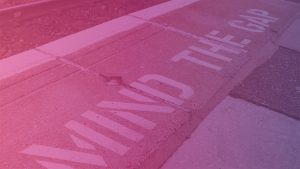The recruitment process can be a truly challenging period – and not simply for those applying for jobs. If your organisation is looking to add someone new to the team, the hiring process is likely to involve a not-inconsiderable investment of your valuable resources, including your time as well as money. And, if a poor choice is made, the whole scenario begins afresh, leading to more time wasted and expenses accrued. It’s certainly not an easy process to navigate, and one common issue is the problem of being swamped by high volumes of applicants, many of whom simply won’t be suitable for the position on offer. The challenge, therefore, is knowing how to whittle down the crowd to enable your hiring team to recognise the true contenders.
Screening Is A Must
To effectively narrow the field of applicants, screening before the formal interview stage is a must. Arm yourself with the details of the job advert, which ideally should be clear on the prerequisites for the vacant position. Be sure to explicitly communicate the job description to applicants, so you and they can both decide whether they have the skills and experience appropriate to the role in Product Design or UX. Look carefully at candidates CVs, too, to check whether the right skills and experience are in place. This can be a quick way to immediately rule out those applicants who don’t possess the attributes you’re looking for. And don’t forget that a covering letter can offer valuable insights, too, into soft skill areas such as written communication, articulacy and professionalism.
Getting The Most From The Interview Process
Once you have carried out these essential screening measures, it’s time to consider the formal interview stage of the hiring process. Whilst screening will give you the insights you need in order to draw up a great interview shortlist, the preparation shouldn’t stop there. Instead, take the time to carefully consider what you hope to achieve from these interviews. What questions do you need to ask? Do you wish to include a skills test element? And, perhaps most importantly, who will be conducting the interviews? After all, if there is to be more than one round of interviews, it will make sense to use the same panel of interviewers throughout, in order to avoid unnecessary repetition of questions.
The questions themselves should not only seek to confirm that the candidate has the right level of skill and experience required by the role on offer, but should also be seen as an opportunity to determine whether their personality will be a good fit with your organisation and its workplace culture. This cultural aspect should never be overlooked, as choosing a candidate who cannot fit in well with an existing team can lead to loss of morale amongst existing staff, and ultimately a need to soon repeat the recruitment process once again.
Finally, don’t forget to sell your company to the applicants, too. Making your organisation appear as an attractive place to work can help to attract the best talent, and increase the likelihood of acceptance when you’re ready to make your job offer. By following these steps, not only can you effectively whittle down the volume of product designer and UX applicants, but you can also be sure of hiring the very best talent for your organisation.
If your organisation is in need of talented UX and designer resources, why not get in touch with the experts at RMG Digital. We can assist at all points in the process, starting with our exceptional talent pool of active and passive job seekers and working through an optimised recruiting and onboarding process to ensure your expectations are met – and exceeded.
Contact us today:
London, UK: 020 3800 1118
Swindon, UK: 01172 840840
Amsterdam, Netherlands: (+31) 208905766


